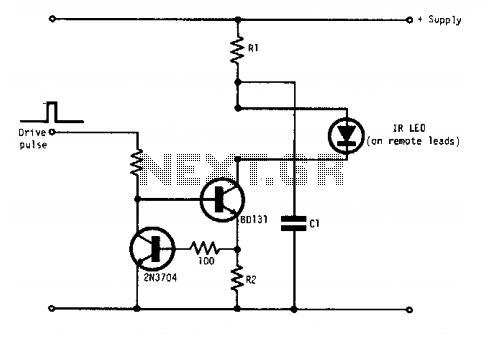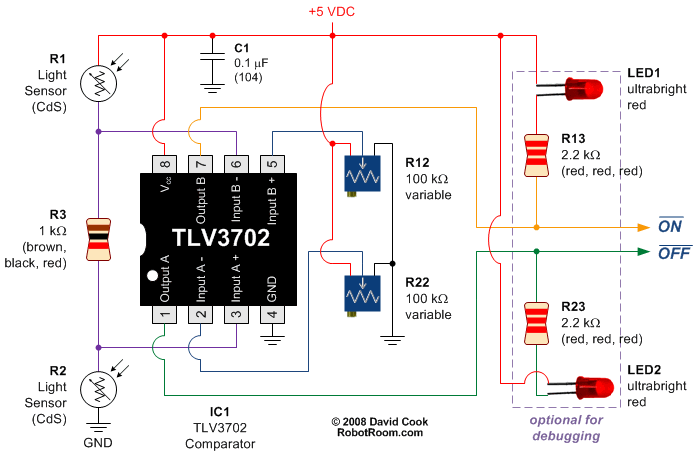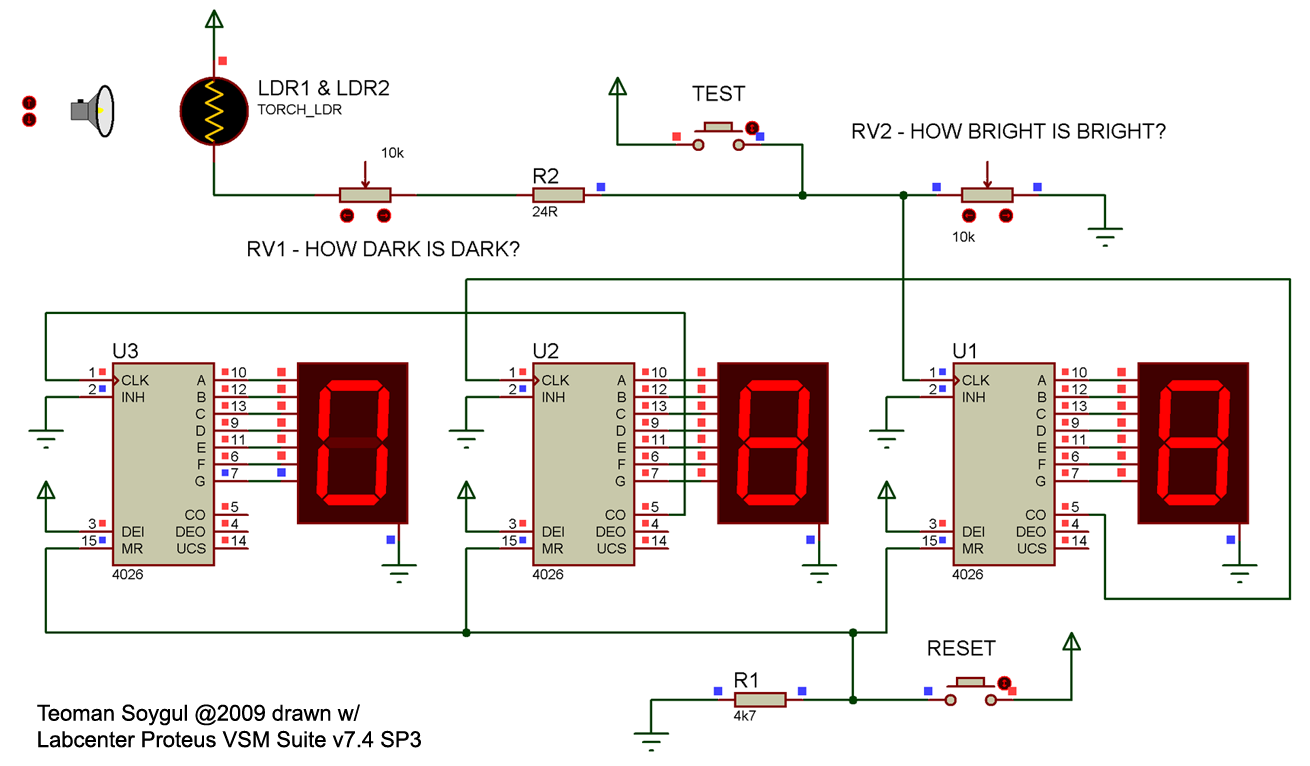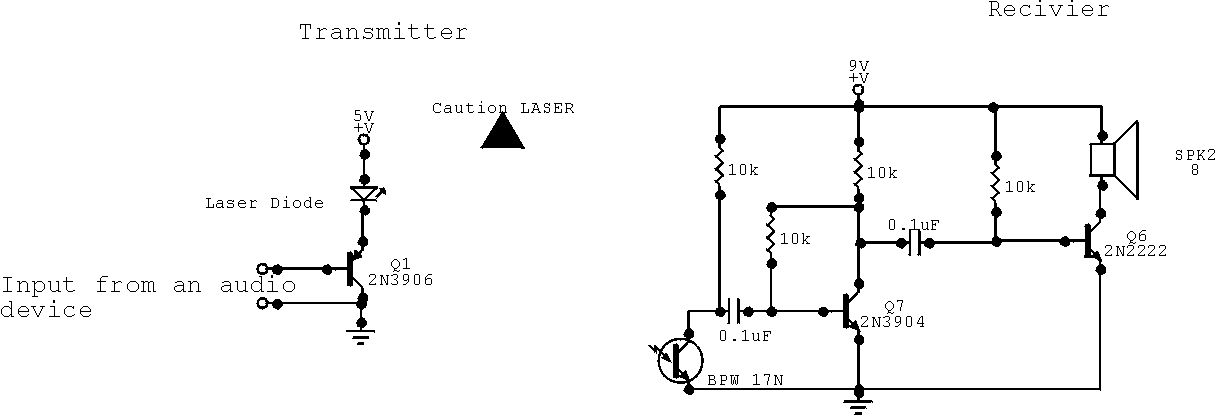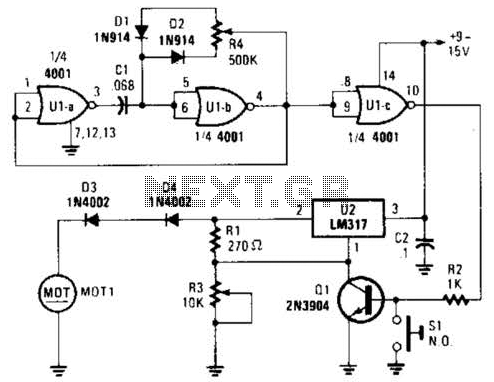
PULSED MODULATED LASER
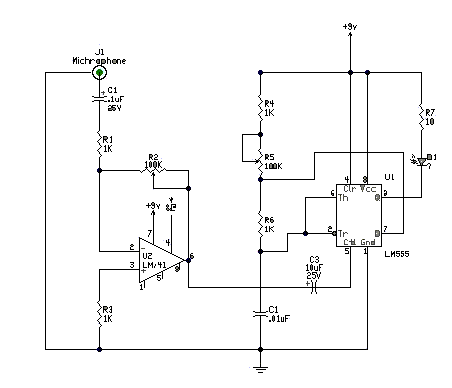
The boards are powered by two 9-volt alkaline batteries. The circuits are a compilation of those found in the Radio Shack Engineering Handbook for constructing pulse-modulated LED transmitters and receivers. The laser diode "D1" is replaced with an affordable laser pointer pen, which can be found at most hardware stores, K-Mart, Walmart, etc. The transmitter board replaces the batteries used in the pen. The range is 200-600 feet at night, and the sound quality is excellent.
The circuit design utilizes two 9-volt alkaline batteries to provide the necessary power for operation. This configuration is efficient for portable applications, allowing for a compact design while ensuring adequate voltage and current levels for the components involved. The circuits are derived from the Radio Shack Engineering Handbook, which serves as a reliable resource for building pulse-modulated LED transmitters and receivers.
In this design, the traditional laser diode "D1" is substituted with a cost-effective laser pointer pen. This substitution not only reduces overall costs but also simplifies the assembly process, as these pens are widely available and require minimal modifications. The transmitter board is engineered to replace the batteries typically housed within the laser pen, thereby integrating the power supply directly into the circuit.
The effective operational range of this setup is impressive, extending from 200 to 600 feet during nighttime conditions. This capability is particularly advantageous for applications that require long-distance transmission, such as in theatrical lighting or remote signaling systems. Additionally, the sound quality produced by the transmitter is noted to be excellent, indicating that the modulation techniques employed are effective in maintaining audio fidelity during transmission.
Overall, this circuit design exemplifies a practical application of basic electronic principles to create a functional and efficient LED transmitter and receiver system, suitable for various uses in both hobbyist and professional settings.Boards are powered by two 9volt alkaline batteries. Circuits are a compilation of circuits found in the Radio Shack Engineering Handbook for making pulse modulated LED transmitters and receivers. The laser diode "D1" is substituted with an inexpensive laser pointer pen available at most hardware stores, K-Mart, Wall Mart, etc The transmitter board
replaces the batteries used in the pen. Range 200-600 feet at night. Sound quality is excellent. 🔗 External reference
The circuit design utilizes two 9-volt alkaline batteries to provide the necessary power for operation. This configuration is efficient for portable applications, allowing for a compact design while ensuring adequate voltage and current levels for the components involved. The circuits are derived from the Radio Shack Engineering Handbook, which serves as a reliable resource for building pulse-modulated LED transmitters and receivers.
In this design, the traditional laser diode "D1" is substituted with a cost-effective laser pointer pen. This substitution not only reduces overall costs but also simplifies the assembly process, as these pens are widely available and require minimal modifications. The transmitter board is engineered to replace the batteries typically housed within the laser pen, thereby integrating the power supply directly into the circuit.
The effective operational range of this setup is impressive, extending from 200 to 600 feet during nighttime conditions. This capability is particularly advantageous for applications that require long-distance transmission, such as in theatrical lighting or remote signaling systems. Additionally, the sound quality produced by the transmitter is noted to be excellent, indicating that the modulation techniques employed are effective in maintaining audio fidelity during transmission.
Overall, this circuit design exemplifies a practical application of basic electronic principles to create a functional and efficient LED transmitter and receiver system, suitable for various uses in both hobbyist and professional settings.Boards are powered by two 9volt alkaline batteries. Circuits are a compilation of circuits found in the Radio Shack Engineering Handbook for making pulse modulated LED transmitters and receivers. The laser diode "D1" is substituted with an inexpensive laser pointer pen available at most hardware stores, K-Mart, Wall Mart, etc The transmitter board
replaces the batteries used in the pen. Range 200-600 feet at night. Sound quality is excellent. 🔗 External reference
